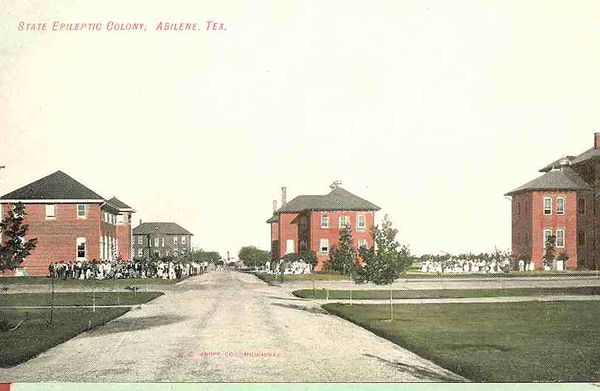Difference between revisions of "Portal:Featured Image Of The Week"
From Asylum Projects
M-Explorer (talk | contribs) |
M-Explorer (talk | contribs) |
||
| (31 intermediate revisions by the same user not shown) | |||
| Line 1: | Line 1: | ||
{{FIformat | {{FIformat | ||
| − | |Image= | + | |Image= EpilepticColony1910.jpg |
|Width= 600px | |Width= 600px | ||
| − | |Body= The | + | |Body= The only institution of its kind in the United States, the [[Abilene State School|State Epileptic Colony]] opened its doors March 26th, 1904. It immediately filled to capacity with transfers from the three state asylums. Dr. John Preston, the colony's first superintendent, admitted 104 patients that day. Treatment was a combination of proper diet, hygiene, regular habits, and exercise. The state provided free treatment for indigent patients. Others paid five dollars a week for board, medication and treatment. By August, the institution was filled to capacity with 201 patients. |
}} | }} | ||
Revision as of 04:15, 12 September 2021
Featured Image Of The Week
The only institution of its kind in the United States, the State Epileptic Colony opened its doors March 26th, 1904. It immediately filled to capacity with transfers from the three state asylums. Dr. John Preston, the colony's first superintendent, admitted 104 patients that day. Treatment was a combination of proper diet, hygiene, regular habits, and exercise. The state provided free treatment for indigent patients. Others paid five dollars a week for board, medication and treatment. By August, the institution was filled to capacity with 201 patients.
